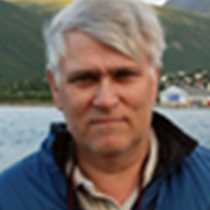Yesterday in the afternoon our captain took the ship deep into Drygalski fjord, named after the famous German Antarctic explorer who sailed with his ship Gauss to East Antarctica in 1901. Drygalski has the last green vegetation, including some minor spots with tussock grass we will see until we arrive back to Tierra del Fuego. Today we had our first encounter of “Antarctica feeling” with cold rugged glaciers, later followed by the sighting of a huge iceberg, B-17A, which has drifted from the Ross Sea. From now on our voyage will be about ice!
To encounter a massive tabular iceberg is always a wonderful experience. This ice broke off along the Ross Ice-shelf, 14 years ago, and has now semi-circumnavigated the Antarctic continent, including a detour into the Weddell Sea gyro. The size is estimated to 165 square nautical miles. Now it is temporally sitting on ground off South Georgia but one day it will continue sailing northeast and reach the Antarctic Convergence. Once it crosses the convergence it will rapidly melt away.
We continued plowing southwest heading for Antarctica, which we had our first taste of last afternoon. We are tracing backwards the incredible sea voyage made by Shackleton and his five men in April 1916, in their small lifeboat the James B. Caird with Worsley as the navigator. Our next waypoint is set for Elephant Island, the island Shackleton’s men had to build their shelter on and wait for the ‘Boss’ to return before taking them back to England. This island is located at the very far east of the group of islands named South Shetland. Although our encounter with this rugged ocean is more pleasant than the crew experienced onboard the James B. Caird, we are able to feel the huge swell of the Southern Ocean.
Scientifically, we have been in Antarctica since the day before we arrived in South Georgia. This occurred as we crossed the Antarctic Convergence, a strict boarder where the cold water running north from the Antarctic continent meets less cold, sub-Antarctic water and it sinks. It is for any ecologist a very distinct border for all the living creatures that make a living or reproduce down south. It was suggested by some of the original signers of the Antarctic Treaty (1959) to also be the political definition of Antarctica, but as it moves north and south depending on the season, the lawmakers wanted to have something steadier. Of course, the British wanted to push the definition further south to be able to maintain their claim to South Georgia and the South Sandwich Islands. The political definition is now set to latitude 60o south, which we will cross tomorrow.
Today was filled with presentations and a day at sea provides time to download, organize, and edit photos taken over our remarkable visit to the “paradise.” After any visit to South Georgia it will be hard to find a place which can compete, the scenery, the concentration of wildlife… After dinner our photo team provided photo feedback on many of the great pictures taken during our five days stay at South Georgia. It was an outstanding collection of images contributed, but of course small things can always be learned by looking at how others photographed the same scene. It is amazing how differently we each interpret and “see” the same animals and place. “Seeing” is one of the gifts of any expedition.









